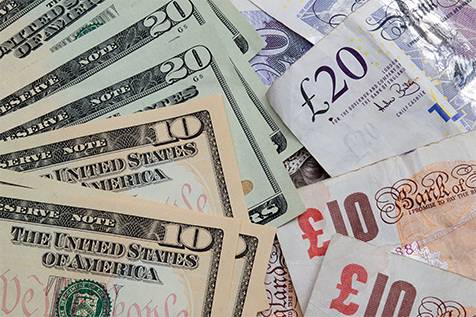The euro rose in the European market on Friday against a basket of global currencies, resuming gains that had paused for two days against the US dollar, moving into positive territory and on the verge of a weekly gain, supported by the weak performance of the US currency ahead of the release of US monthly jobs data.
Data released this week indicated renewed inflationary pressures on European Central Bank policymakers, significantly reducing the likelihood of an interest rate cut in Europe during the remainder of this year.
Price Overview
• Euro exchange rate today: the euro rose against the dollar by 0.2% to (1.1734$), from today’s opening level at (1.1715$), with a low recorded at (1.1712$).
• The euro ended Thursday’s trading down by about 0.2% against the dollar, its second daily loss in a row, amid ongoing correction from a nearly two-week high at 1.1779$.
• Apart from selling and profit-taking, the euro retreated after the Wall Street Journal reported that the United States would provide Ukraine with intelligence to conduct long-range missile strikes on Russia’s energy infrastructure.
Weekly Trading
Over the course of this week, which officially concludes with today’s settlement, the single European currency “euro” is so far up by about 0.35% against the US dollar, on the verge of its fourth weekly gain in the last five weeks.
US Dollar
The dollar index fell on Friday by 0.15%, resuming losses that had temporarily halted in the previous session, reflecting weakness in the US currency against a basket of major and minor currencies.
This decline comes ahead of the release of US monthly jobs data, which will provide further evidence on whether the Federal Reserve will continue easing monetary policy and cutting interest rates during the remainder of this year.
European Interest Rates
• Data on Wednesday showed inflation in Europe rising in line with expectations in September, highlighting renewed inflationary pressures on European Central Bank policymakers.
• Following this data, money market pricing of a potential 25-basis-point interest rate cut by the European Central Bank in October is currently stable at less than 10%.
• Traders trimmed their bets on ECB monetary easing, indicating the end of this year’s rate-cutting cycle.
• Sources: policymakers at the European Central Bank believe no further rate cuts are needed to achieve 2% inflation, despite new economic forecasts pointing to lower rates over the next two years.
• Sources: unless the eurozone faces another major economic shock, borrowing costs are expected to remain at current levels for some time.
• Traders trimmed their bets on ECB monetary easing, indicating the end of this year’s rate-cutting cycle.


